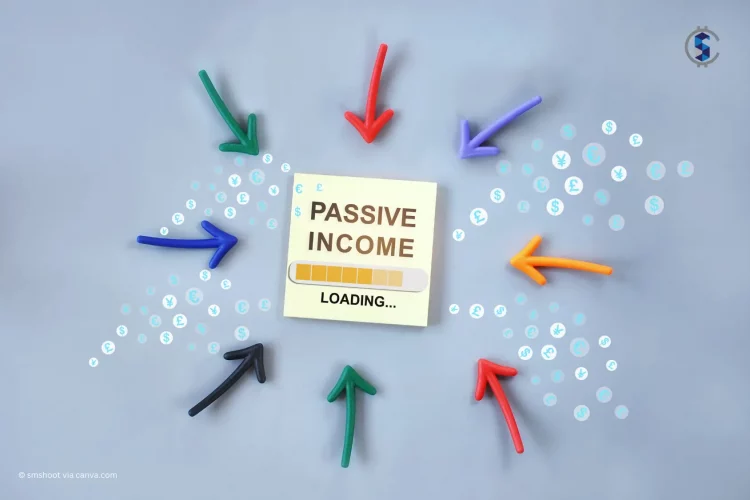
When discussing personal finance and investing, the goal is often passive income. This kind of income has the power to free you from the daily grind, something traditionally linked to retirement but increasingly sought after by younger individuals. While bonds and dividend-paying stocks are the go-to choices for many, the advantage of investing in real estate is often overlooked. In this detailed blog, you’ll learn how to get into real estate investing through 10 distinct methods for creating financial freedom, each assessed by its level of risk. We’ll cover everything from real estate tips for beginners to more advanced real estate investment opportunities, giving you the tools you need to succeed.
1. Real Estate Investment Trusts (REITs)
Risk Level: Variable
Real Estate Investment Trusts, or REITs, are a popular choice for diversifying into real estate. They are publicly traded, regulated by the SEC, and offer high liquidity. Investors can purchase REITs through regular brokerage accounts, IRAs, 401(k)s, and other retirement accounts. REITs provide an easy way to diversify across a wide range of properties and real estate projects globally. REITs come in two main types: equity REITs, which invest directly in properties, and mortgage REITs (mREITs), which lend money secured by real estate. One unique feature of REITs is their requirement to distribute at least 90% of their profits as dividends, resulting in typically higher dividend yields compared to regular stocks or funds. However, this pay-out rule can limit the portfolio growth potential for REITs.
2. Syndications and Silent Partnerships
Risk Level: Variable
Real estate syndications and silent partnerships involve pooling capital with others but relinquishing active involvement in property management decisions. Syndications typically apply to large commercial properties and usually cater to accredited investors. Silent partnerships, on the other hand, allow you to form private arrangements with friends, family, or trusted individuals. Trust and familiarity with the lead investor are paramount in these arrangements, as they often lack the safeguards found in traditional investment structures.
3. Real Estate Funds
Risk Level: Variable
What a real estate investment fund offers is the added advantage of accommodating both debt-based and equity-based investments, further enhancing their utility in building wealth. Equity-based investments in these funds provide investors with ownership stakes in the underlying properties, allowing them to benefit from rental income, property appreciation, and potential profits upon sale. This equity-based approach allows for long-term wealth creation and wealth preservation.
On the other hand, debt-based investments within these funds involve providing loans to property owners or developers in exchange for regular interest payments and, often, principal repayment upon maturity. Debt-based investments offer a more predictable income stream with lower exposure to property market fluctuations. This approach is particularly appealing to risk-averse investors seeking stable cash flow without the responsibilities of property ownership. Most importantly, you have experts finding the best investments for you and you do not need to spend much time on managing the investments yourself.
By offering both debt and equity investment options, real estate funds cater to a broad spectrum of investor preferences and risk appetites. Explore a range of investments available on SafeRE’s platform with different risk profiles and asset classes. This flexibility enables investors to tailor their participation in the real estate market to align with their specific financial goals and risk tolerance. Whether seeking the potential for significant returns through equity-based investments or the security of regular income through debt-based investments, real estate investment funds provide a comprehensive wealth-building solution.
4. House Hacking
Risk Level: Low to Moderate
If you are wondering how to get started in real estate investing with the lowest possible risks, house hacking is one of them. This is a clever strategy that involves living in one’s rental property while renting out additional units to cover the mortgage. The concept is simple: other tenants pay your housing expenses, effectively providing you with free accommodation. While multifamily properties are commonly used for house hacking, single-family homes can also be adapted for this purpose. Various approaches, such as renting out rooms, creating accessory dwelling units, hosting foreign exchange students, and even using Airbnb for short-term rentals, make house hacking an adaptable and low-risk method of generating passive income. Unfortunately, this investment method is only available to you if your accommodation has spare capacity available and it is difficult to scale it up.
5. Rental Properties
Risk Level: Moderate
Direct ownership of rental properties is a classic approach to investing in real estate assets, offering a reliable method for generating passive income. The advantage of this investment strategy lies in its predictability. You can accurately calculate your cash flow or return on investment (ROI), considering the purchase price, market rent, and long-term average expenses like property taxes, management fees, insurance, vacancy rates, and repair costs. Few other investment opportunities offer such a level of predictability.
Additionally, the tax benefits tied to owning real estate further enhance its appeal. You can claim deductions on a variety of expenses, ranging from mortgage interest to property management fees. While rental properties offer a stable and time-tested path to passive income, it’s essential to note that they can be illiquid, require a significant upfront investment, and may demand a considerable time commitment.
6. Private Credit Notes
Risk Level: Moderate to High
Financing real estate investors can provide attractive returns, but it comes with limited protection. Your name isn’t on the property deed, which means your recourse in case of default is typically a legal process. Trust and a solid relationship with the borrower are essential when considering private notes as a source of passive income. Private credit note investment is better left to expert managers, who have the skills set to conduct careful due diligence on the borrowers and have the means to secure good collateral.
7. Real Estate Crowdfunding
Risk Level: High
Real estate crowdfunding represents a relatively recent entry into the world of real estate investments. It presents the opportunity for indirect real estate investment with lower capital requirements. While some crowdfunding platforms limit participation to accredited investors, others now cater to middle-class investors. This accessibility allows you to start investing with less than $1,000, offering exposure to various real estate types, including apartment buildings and office spaces. Crowdfunding models differ among platforms, with some directly purchasing properties and allowing investors to contribute to pooled funds similar to publicly traded REITs. Others function more like mREITs, lending money against real estate. Furthermore, some platforms allow investors to pick and choose individual loans, adding a personalised dimension to their real estate investments. However, returns from individually selected loans may be tied to loan maturity, often one year or longer. The exposure to, often, smaller properties increases the risk that a default might affect you significantly.
8. Airbnb/Vacation Rentals
Risk Level: High
Airbnb and vacation rentals offer an alternative to traditional long-term property rentals. However, this business model requires significantly more effort, as it entails marketing, property cleaning, guest coordination, and ongoing communication. Managing a short-term rental is akin to running a hospitality business, and returns can vary based on factors like seasonality and local demand. Accurate forecasting of expenses and returns is critical for success in this high-risk endeavour.
9. Wholesaling
Risk Level: High
Wholesaling properties is a strategy that’s often misunderstood by newcomers to real estate investing. It involves identifying exceptional property deals, securing them under contract, and then selling the contracts to other investors at a profit. Wholesalers don’t take title to the properties; instead, they act as intermediaries connecting motivated sellers with willing buyers. While it can be lucrative, wholesaling requires substantial effort in finding good deals and building trust with investors. There’s also a risk of being unable to find a buyer, leaving you with a contract obligation.
10. Flipping Houses
Risk Level: High
House flipping is an active, hands-on approach to real estate investment. It can yield high cash-on-cash returns but demands significant effort. Accurate cost estimation is crucial, as is an understanding of market values. Flippers must also budget for unexpected repairs and manage renovations efficiently. While the potential profits are enticing, what house flipping carries is a high level of risk and involves a great deal of work.
Looking to Invest? Explore more opportunities with SafeRE
SafeRE has created a revolution in providing direct access to quality real estate investments by reducing fees and offering a seamless and transparent investment process. SafeRE’s real estate investment platform provides access for investors to funds that exhibit steady performance over the years. SafeRE constantly introduces more efficient ways to build your wealth through a selected range of quality investments. For more information on investment opportunities, feel free to reach out to us or directly access your account on the SafeRE platform.
This is not an advertisement making an offer or calling attention to an offer or intended offer. The information contained herein is for informational purposes only and has not been independently verified to ensure its accuracy and fairness. Nothing in this content material should be relied upon as a representation or warranty as to the future. In considering any investment or other performance contained herein, investors should bear in mind that past performance is no guarantee of future results and should consult their respective advisors.
Neither this article nor anything contained herein shall form the basis of any contract or commitment whatsoever should not form the basis of any investment decision and should not be considered as advice or recommendation by SafeRE, its affiliates, representatives, directors, managers officers, employees, agents, to acquire any investment products. This article is confidential and may not be copied, distributed, or reproduced in any form for any purposes without prior consent provided by SafeRE.



